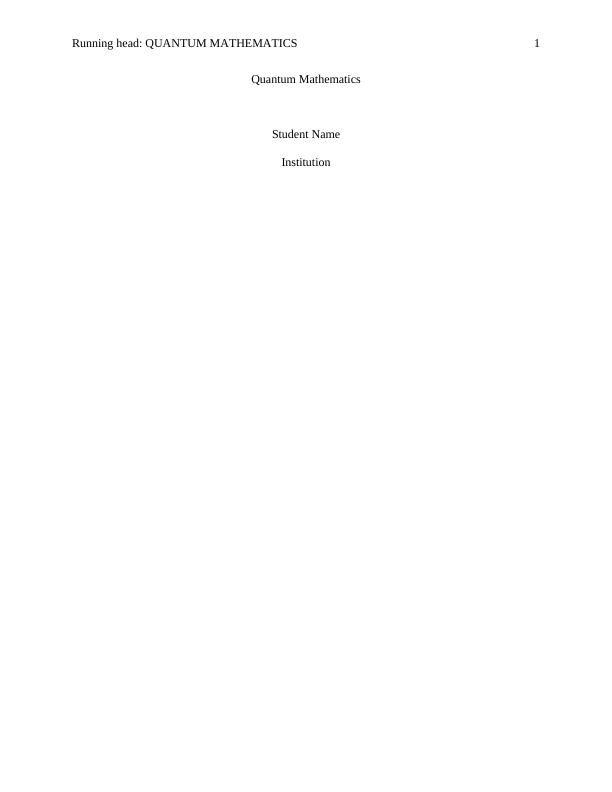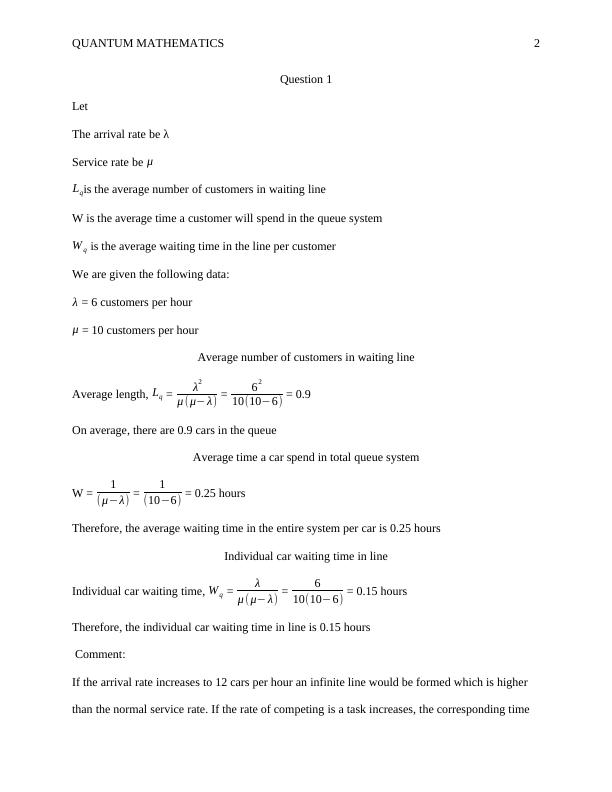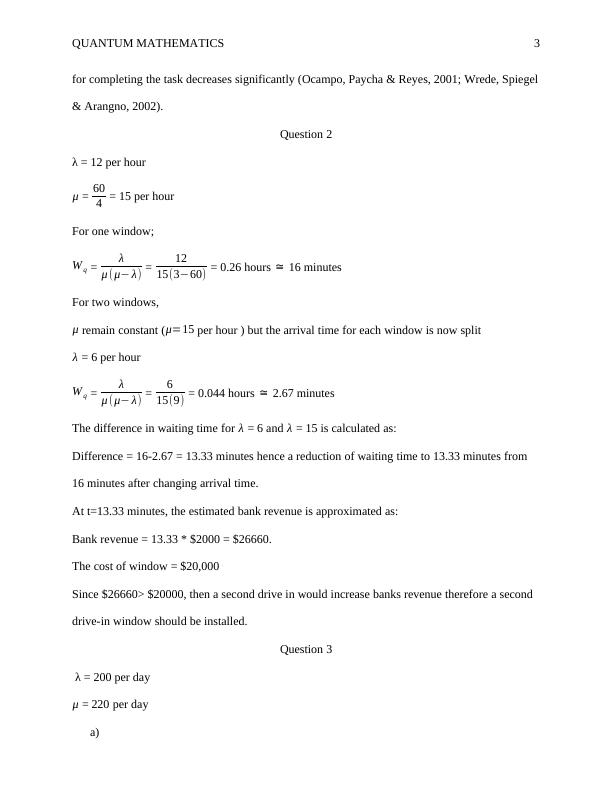Quantum Mathematics
Analyzing waiting line systems and making decisions based on queuing analysis.
7 Pages835 Words57 Views
Added on 2022-12-30
About This Document
This document provides study material on Quantum Mathematics, including the average number of customers in a waiting line, average time spent in the queue system, and average waiting time in the line per customer. It also discusses the impact of changing arrival rates and the installation of additional drive-in windows on bank revenue. Additionally, it covers the average arrival time for trucks and the cost savings of operating new scales. Furthermore, it explores the approval process for students and the impact of adding more advisers. Lastly, it analyzes the revenue loss and the decision to switch to a new repair process for a company.
Quantum Mathematics
Analyzing waiting line systems and making decisions based on queuing analysis.
Added on 2022-12-30
ShareRelated Documents
End of preview
Want to access all the pages? Upload your documents or become a member.
Solved assignments on Marketing Management and Queuing Theory
|6
|914
|268



